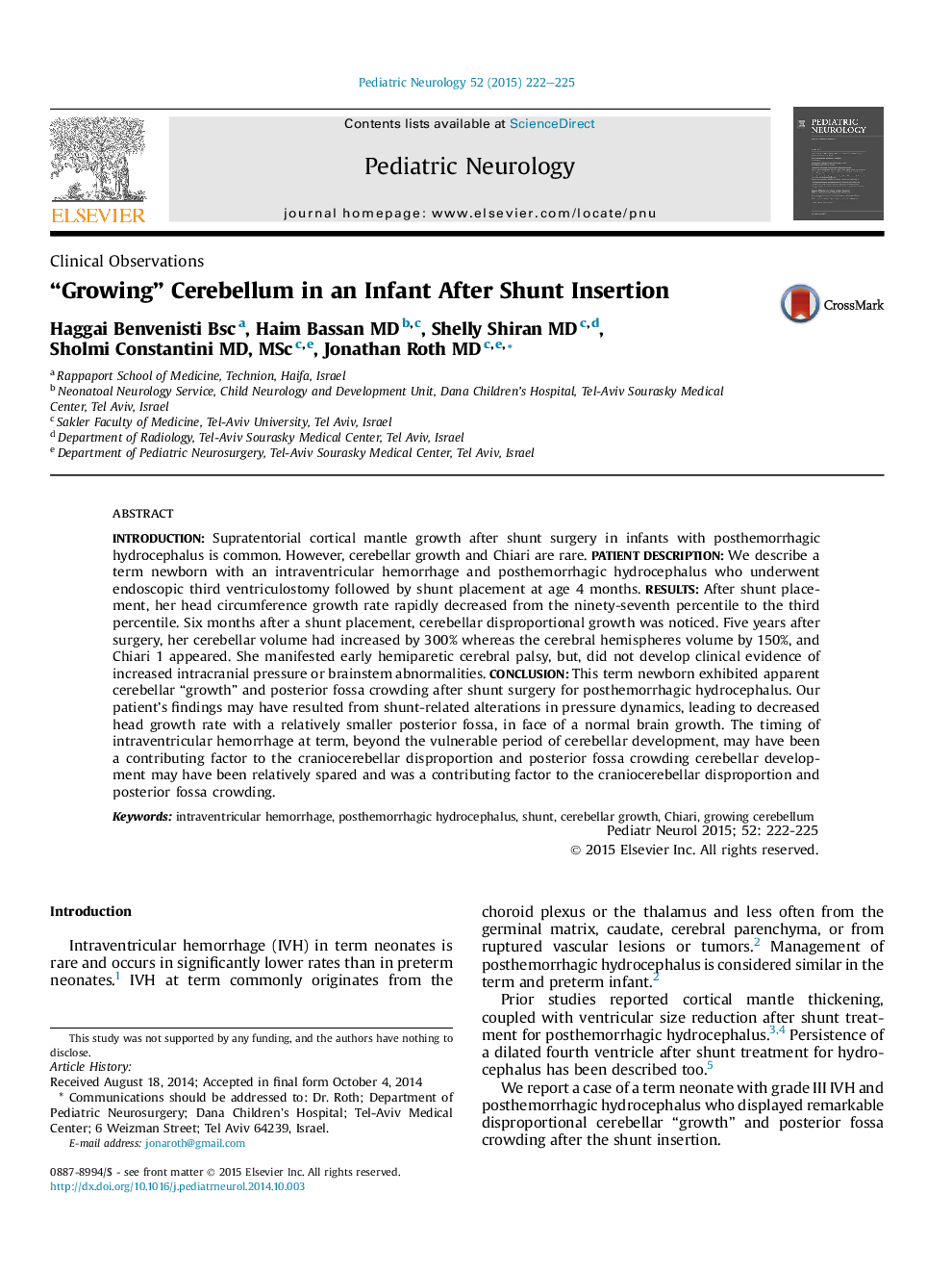| Article ID | Journal | Published Year | Pages | File Type |
|---|---|---|---|---|
| 3084727 | Pediatric Neurology | 2015 | 4 Pages |
IntroductionSupratentorial cortical mantle growth after shunt surgery in infants with posthemorrhagic hydrocephalus is common. However, cerebellar growth and Chiari are rare.Patient DescriptionWe describe a term newborn with an intraventricular hemorrhage and posthemorrhagic hydrocephalus who underwent endoscopic third ventriculostomy followed by shunt placement at age 4 months.ResultsAfter shunt placement, her head circumference growth rate rapidly decreased from the ninety-seventh percentile to the third percentile. Six months after a shunt placement, cerebellar disproportional growth was noticed. Five years after surgery, her cerebellar volume had increased by 300% whereas the cerebral hemispheres volume by 150%, and Chiari 1 appeared. She manifested early hemiparetic cerebral palsy, but, did not develop clinical evidence of increased intracranial pressure or brainstem abnormalities.ConclusionThis term newborn exhibited apparent cerebellar “growth” and posterior fossa crowding after shunt surgery for posthemorrhagic hydrocephalus. Our patient's findings may have resulted from shunt-related alterations in pressure dynamics, leading to decreased head growth rate with a relatively smaller posterior fossa, in face of a normal brain growth. The timing of intraventricular hemorrhage at term, beyond the vulnerable period of cerebellar development, may have been a contributing factor to the craniocerebellar disproportion and posterior fossa crowding cerebellar development may have been relatively spared and was a contributing factor to the craniocerebellar disproportion and posterior fossa crowding.
